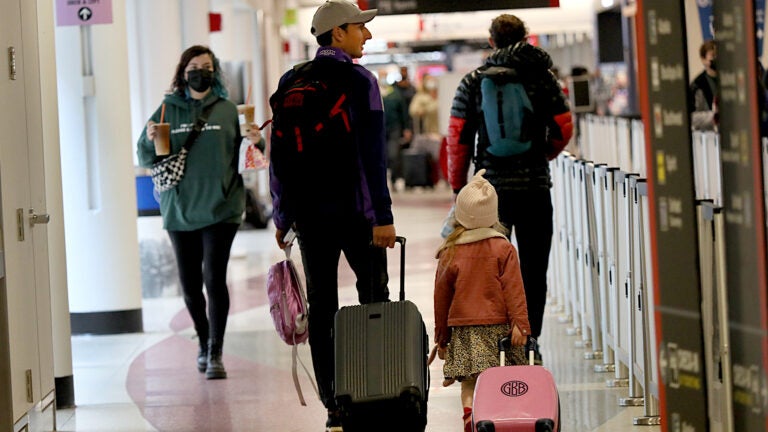Travel
Domestic — and even some international prices — are cooling down.

There’s finally some good news for travelers in a hot, crowded, expensive summer: Airfare is starting to cool. The bad news? It isn’t expected to last.
Domestic round-trip airfare – already a big bargain compared to unusually pricey international flights over the summer – dropped to an average of $257 in the last week of July, according to new data from the flight-booking app Hopper. That’s down 11 percent from last year and 2019, and a decrease of more than 14 percent from the roughly $300 people were paying for round-trip flights over the Fourth of July weekend.
Even international airfare is falling, Hopper’s data shows. A good deal for a round-trip flight to Europe is averaging $813, down a bit from last year but still 7 percent higher than before the pandemic. That’s still significantly cheaper than earlier in the summer; airfare to Europe was averaging $1,371 over the Fourth of July holiday.
Budget-conscious travelers should take advantage while they can: As the holidays approach, many of the deals will disappear.
Typical seasonality is a big factor, said Katy Nastro, a travel expert at the cheap-flight alert service Going.
“Airfare in the middle of July is going to be quite more expensive versus traveling in September and October, regardless if you’re traveling internationally or domestically,” she said. “That’s because kids are back in school; summer might be the only time people can take an extended vacation.”
But there are more forces at work. The cost of flights in the United States skyrocketed last summer, when travel to many international destinations was still complicated or impossible because of the pandemic.
“After people took that first domestic trip, a lot of them overpaid and were like, ‘Whoa, sticker shock. I might be more price-conscious looking forward,’” Nastro said.
Fares for domestic flights have been falling considerably as airlines added capacity to U.S. routes, jet fuel prices dropped, competition increased and travelers shifted to more global getaways.
In earnings reports recently, some airlines noted that their business at home was suffering because of Americans’ appetites to get away. JetBlue, for example, said in its report that a “greater than expected shift of pent-up COVID demand to long-haul international markets” was putting pressure on demand for domestic trips this summer.
“People have been willing to pay incredibly high prices” for their trips abroad, said Hayley Berg, Hopper’s lead economist. “There’s obviously an intense demand for international travel that we saw this summer.”
But leading into fall, those prices are lower because people are on the bucket-list trips they splurged on. Nastro said her company has identified some fares as low as $587 from Dallas to Barcelona for travel in September, and $454 from Boston to Dublin for October travel.
Berg said the pattern is that fares dip in August as travelers are booking trips for September and October, some of the cheapest months – other than January – to take a trip anywhere in the world. The break doesn’t last long, though: Prices start to increase again in September and October with holiday season booking, Berg said.
Looking ahead, Hopper expects domestic airfare to average $267 in August and stay low until mid-September. Those prices are forecast to peak around $283 in late November and early December.
While Hopper doesn’t offer projections for international trips, Berg said she’s hopeful that recent trends in fares to Europe are signaling lower prices to come.
“There is relief in sight; as capacity was added over the summer prices began to plateau and have even dropped below 2018 levels in the last few weeks,” the company wrote in its new consumer travel index, published Tuesday. “As demand remains strong and capacity rises, prices should stabilize this fall.”
Berg said airlines still need to return to pre-pandemic capacity for international flights. And another key component is still missing: competition from a variety of low-cost carriers, which drove bigger airlines to match rock-bottom prices.
“A lot of these airlines were the first to leave and have not come back,” she said. “That is an important ingredient in getting those low prices.”
Originally posted 2023-08-10 16:52:28.